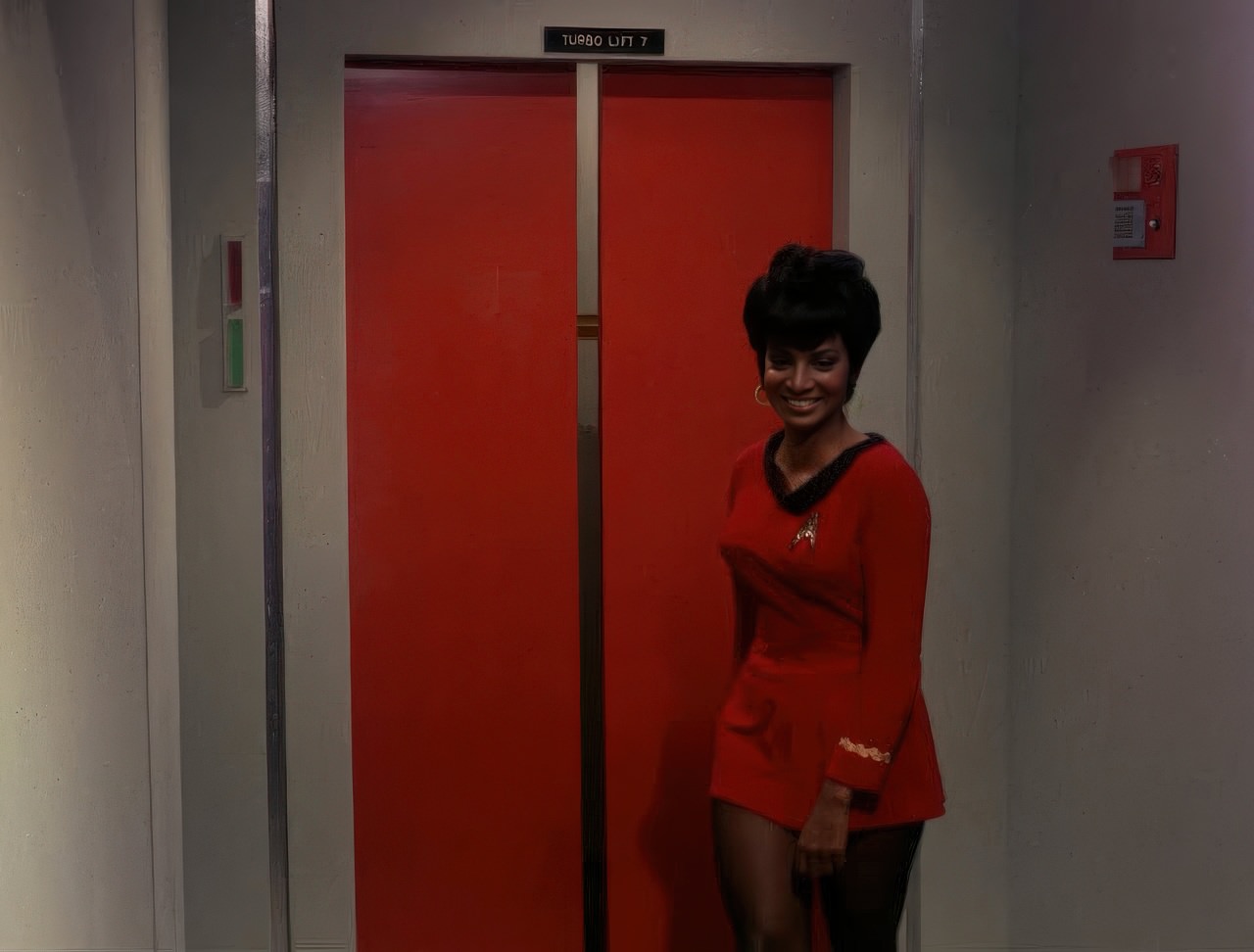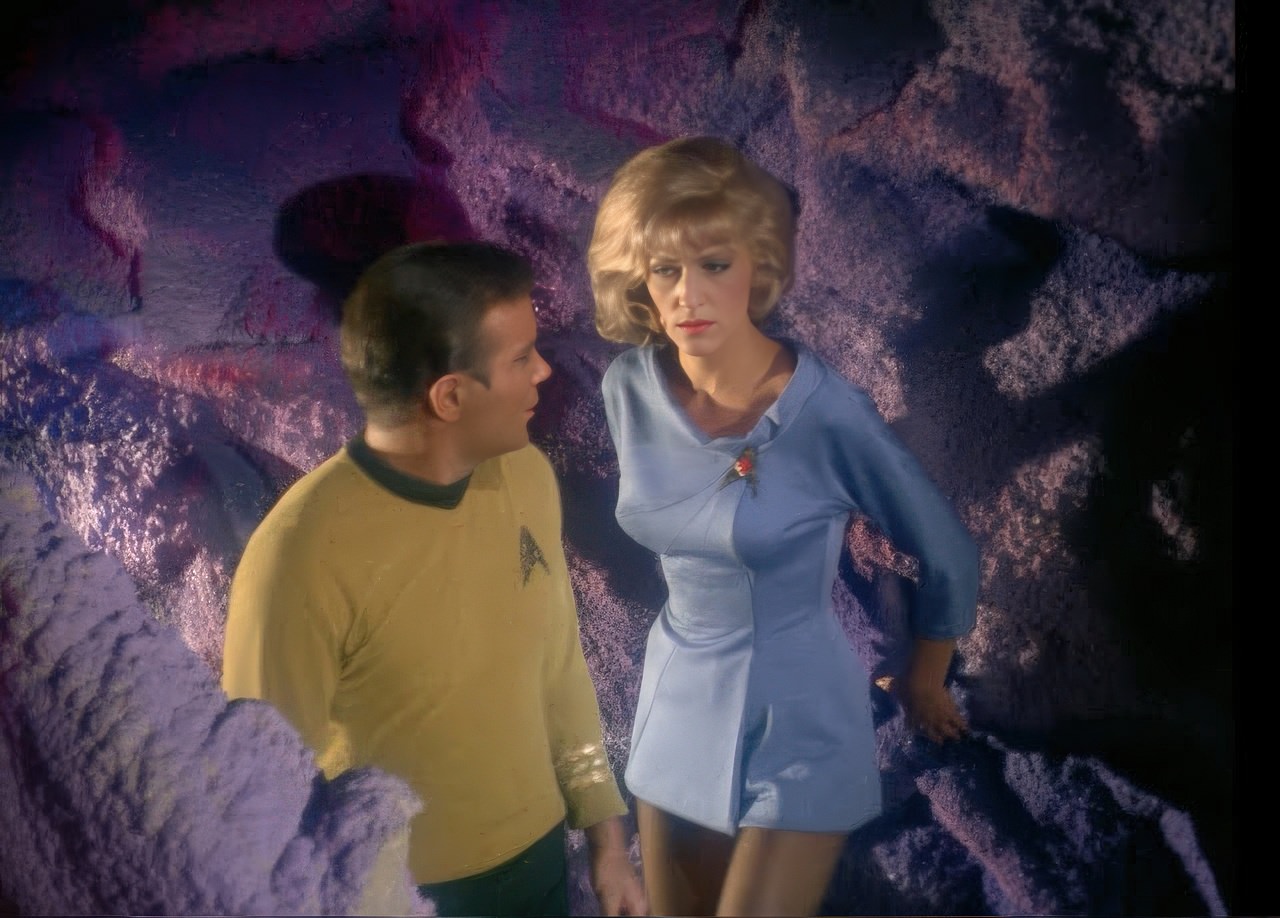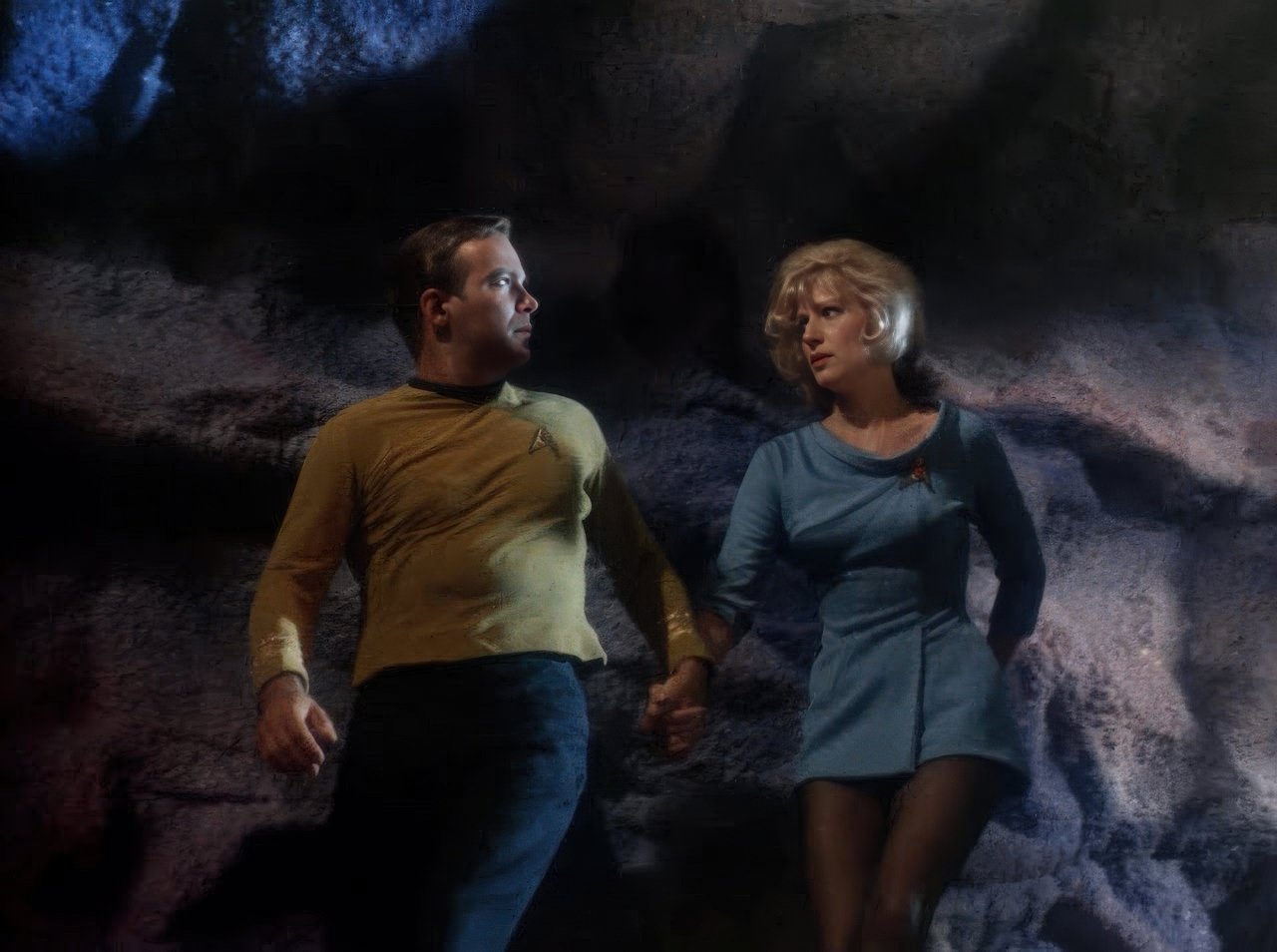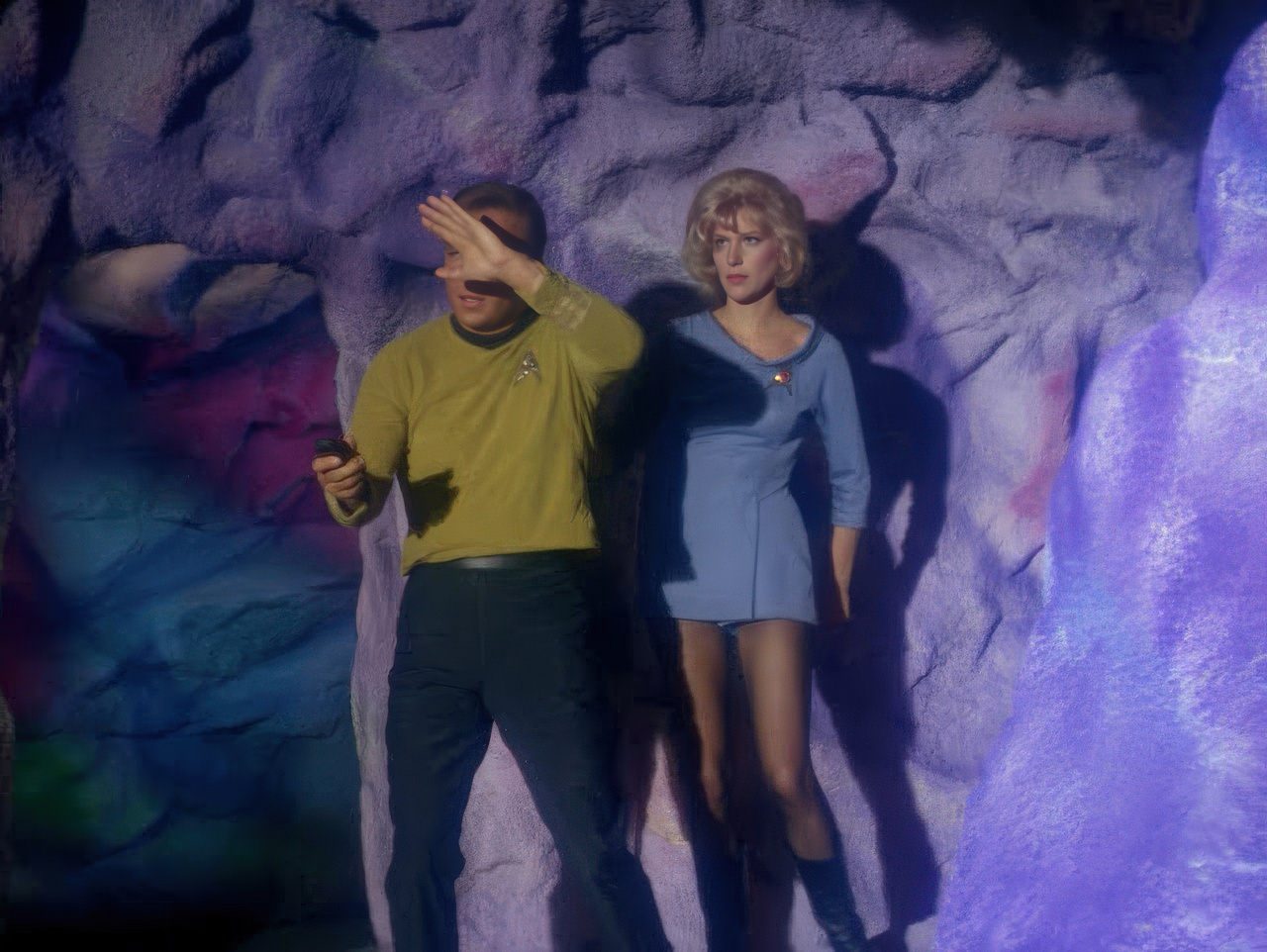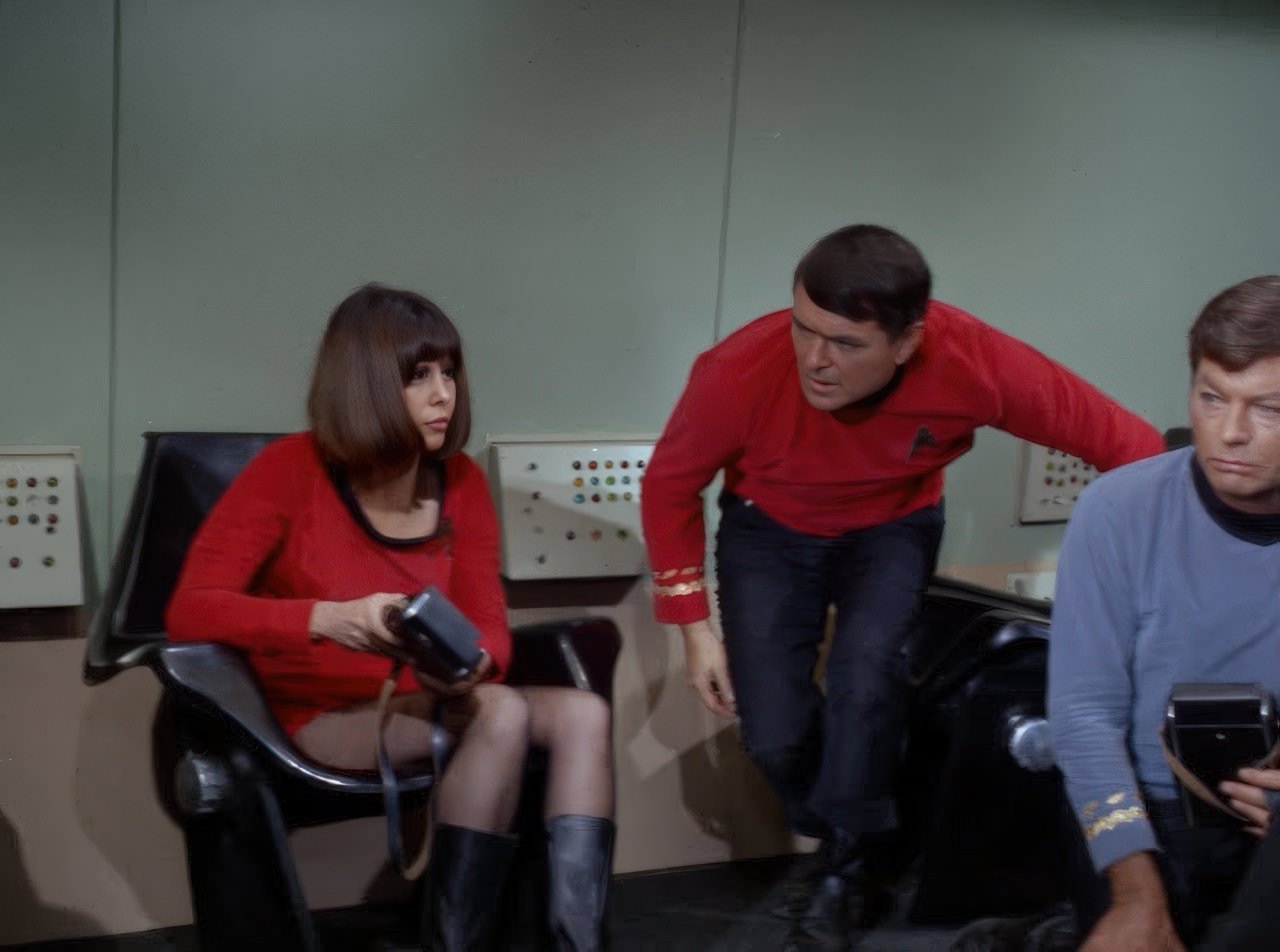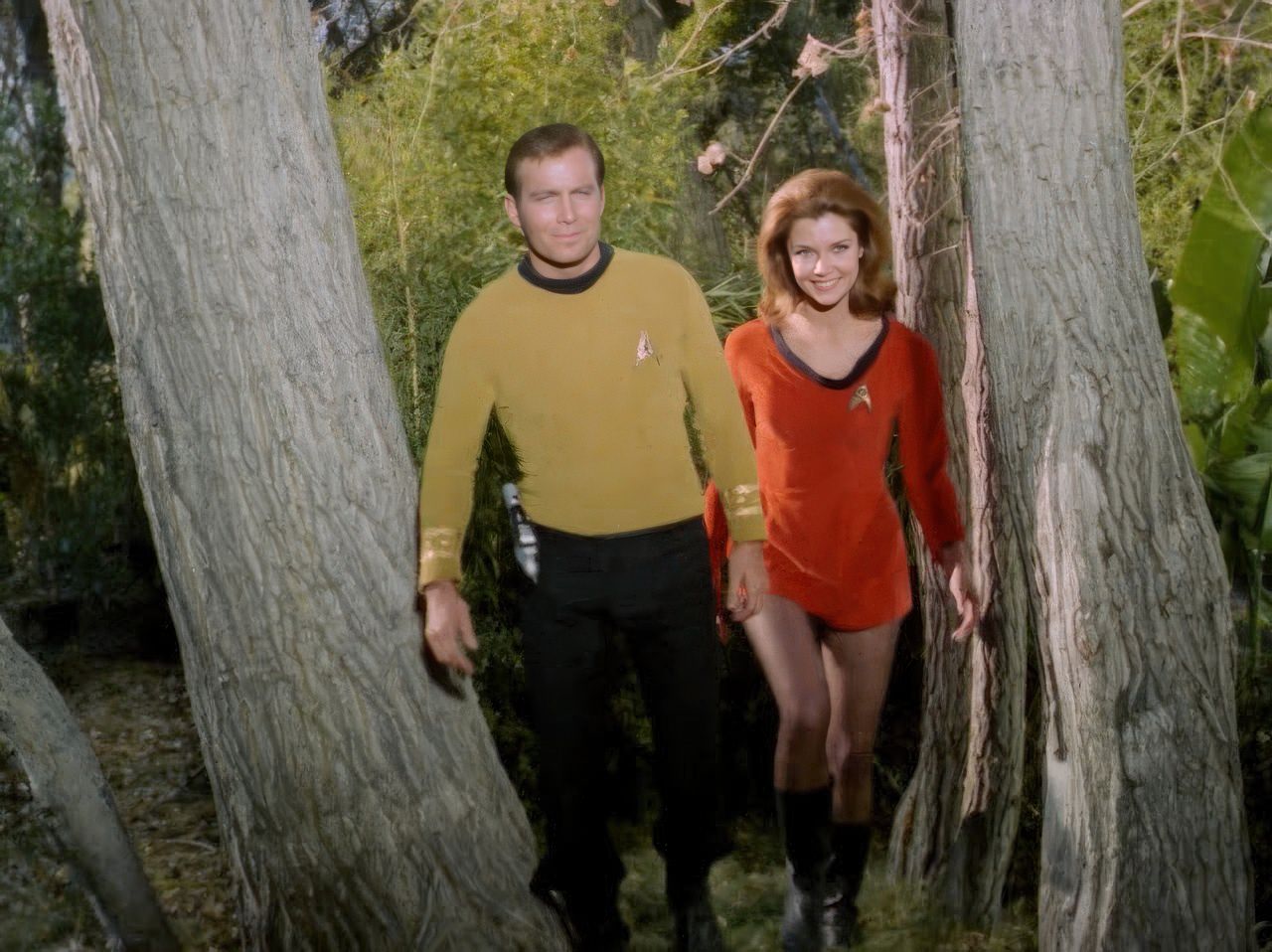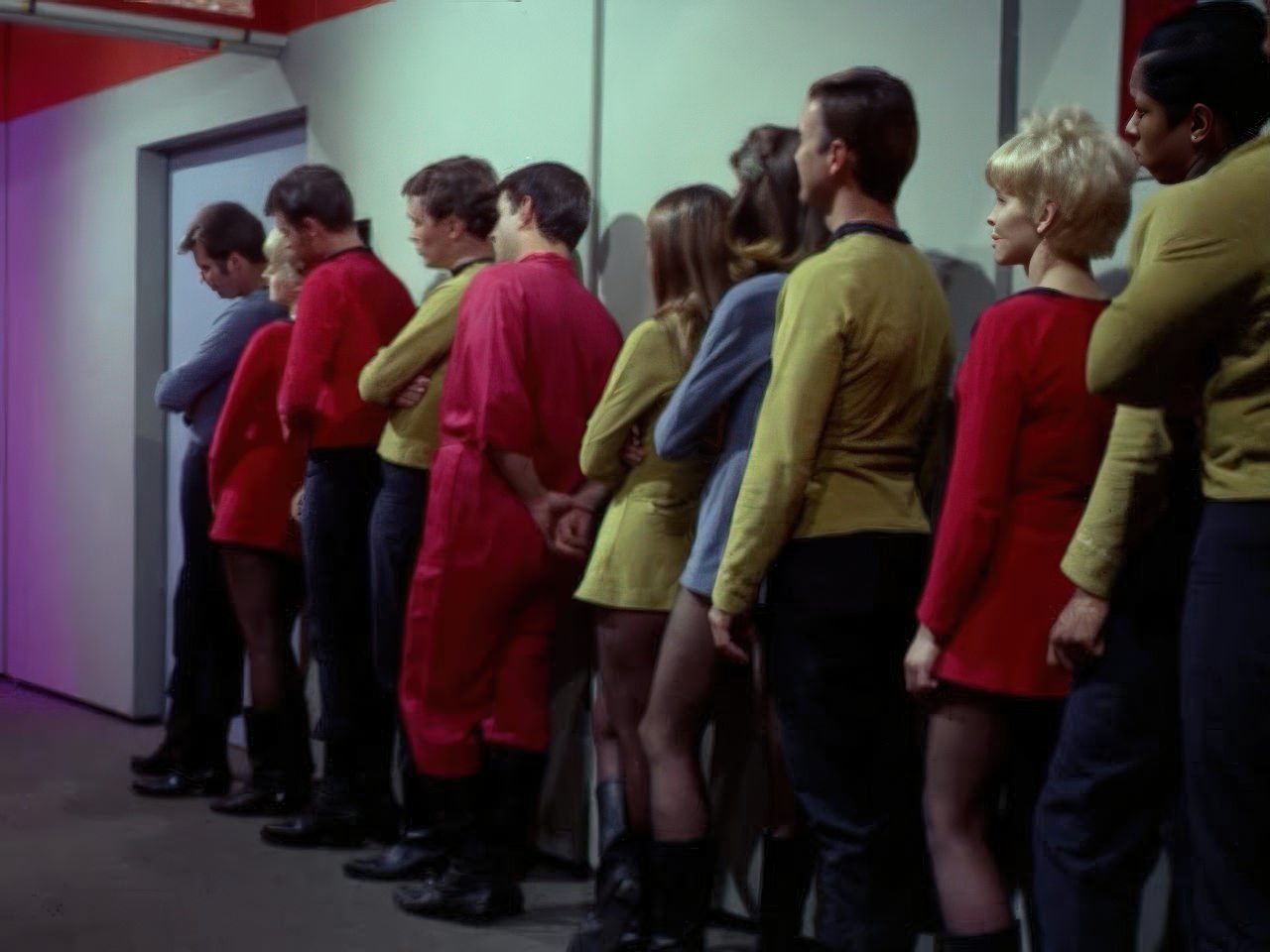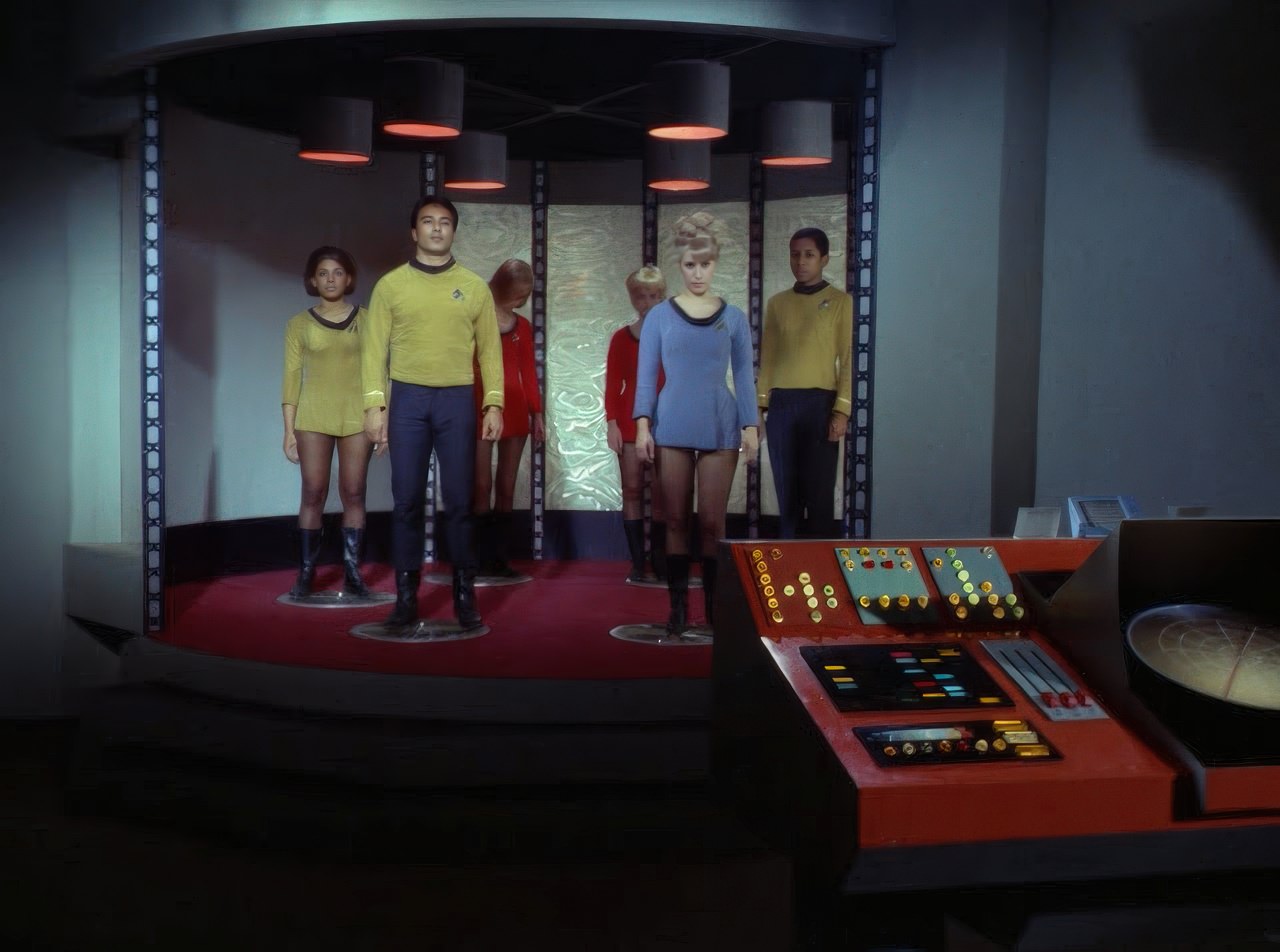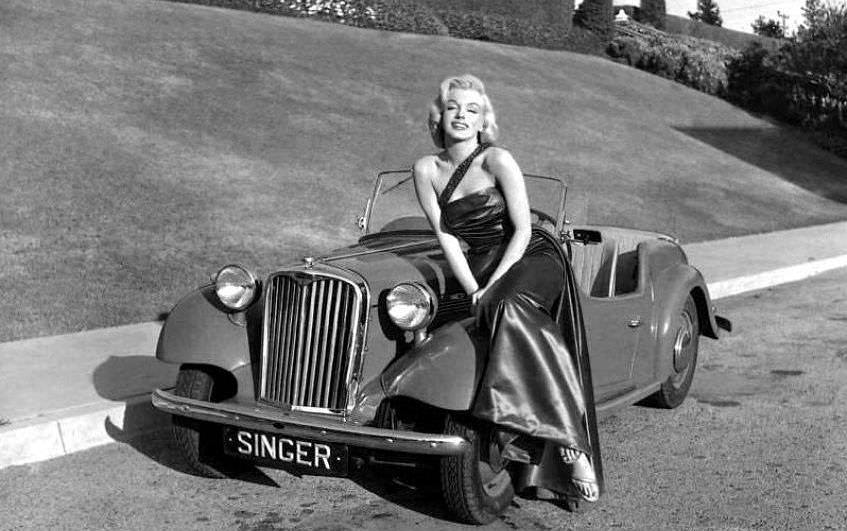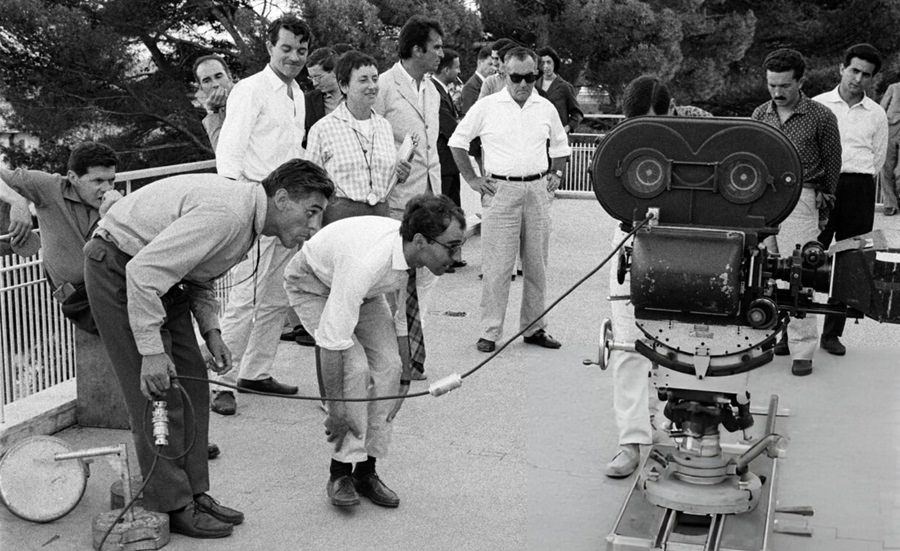The miniskirts of Star Trek (1966) reflected the style of the era. In the mid-1960s, airline stewardesses wore uniforms with short skirts and bold colors. Fashion was shifting, and television followed. Costume designer William Ware Theiss created the show’s Starfleet uniforms with these trends in mind.
A New Look for a New Era
In the early 1960s, uniforms for airline stewardesses followed a formal, military-inspired style. These outfits were structured, with knee-length skirts and modest colors. However, by the middle of the decade, the look had changed. Skirts became shorter, colors became bolder, and fashion took priority over function. Television and film reflected this shift, bringing more daring and eye-catching styles to the screen.
When Star Trek began production, the costume designs had to feel futuristic yet appealing to contemporary audiences. The original pilot episodes featured both men and women in black pants and velour tunics. However, when NBC ordered changes before greenlighting the series, they wanted a “sexier” look. Theiss was given the task of redesigning the uniforms, and he leaned into the trends of the time.
Read more
The Creation of the Starfleet Miniskirt
The miniskirt was still a relatively new fashion item when Star Trek introduced it into its costume design. While the exact origin of the miniskirt is debated, some of the earliest designs appeared in London and Paris fashion circles in 1964, just a couple of years before the show aired. By the time Star Trek hit television screens, short skirts were gaining popularity, especially among young, modern women.
Actress Grace Lee Whitney, who played Yeoman Janice Rand, reportedly suggested the shorter skirts for the show. She had been instructed to create an “undercurrent of suppressed sexuality” in her interactions with Captain Kirk. The costume change fit the studio’s desire for more visually appealing outfits while also aligning with the styles that women were actually wearing in the 1960s.
Theiss’s designs went beyond the Starfleet uniform. Many of his costumes for female guest stars took bold risks, often appearing loose, revealing, or barely held together. This design philosophy became known as “Theiss Titillation Theory”—the idea that clothing is more seductive when it looks like it could fall off at any moment. Compared to some of his more daring designs, the Starfleet miniskirt was relatively modest.
Form, Function, and Feminism
One of the most common criticisms of the Star Trek miniskirt is that it was a required uniform for women, while men had the option of wearing pants. To modern audiences, this difference suggests an imbalance in how male and female characters were portrayed. However, at the time, many of the actresses who wore the costumes felt differently.
Nichelle Nichols, who played Lieutenant Uhura, later addressed the issue in her autobiography. She argued that the miniskirt was not a symbol of oppression but of confidence. In the 1960s, short skirts were not seen as restrictive—they were part of the women’s liberation movement. Women were choosing to wear them as a way of expressing independence and rejecting outdated dress codes.
The design of the uniform also had more practicality than it appeared. The dresses included built-in shorts, making them more functional than a typical miniskirt. Women in Starfleet also wore the same sturdy black boots as the male officers, reinforcing the idea that they were part of an active, disciplined organization.
The Starfleet Miniskirt in Context
In the world of Star Trek, the miniskirt was not treated as unusual or inappropriate. Female officers wore it just as naturally as their male counterparts wore trousers. The show’s futuristic setting suggested that these uniforms were not about enforcing traditional gender roles but about efficiency, style, and equality.
Despite this, discussions about the Star Trek miniskirt remain ongoing. For some, it represents outdated Hollywood standards that prioritized appearance over practicality. For others, it reflects the progressive, fashion-forward spirit of the 1960s. Regardless of interpretation, it remains one of the most recognizable elements of Star Trek’s original series.



